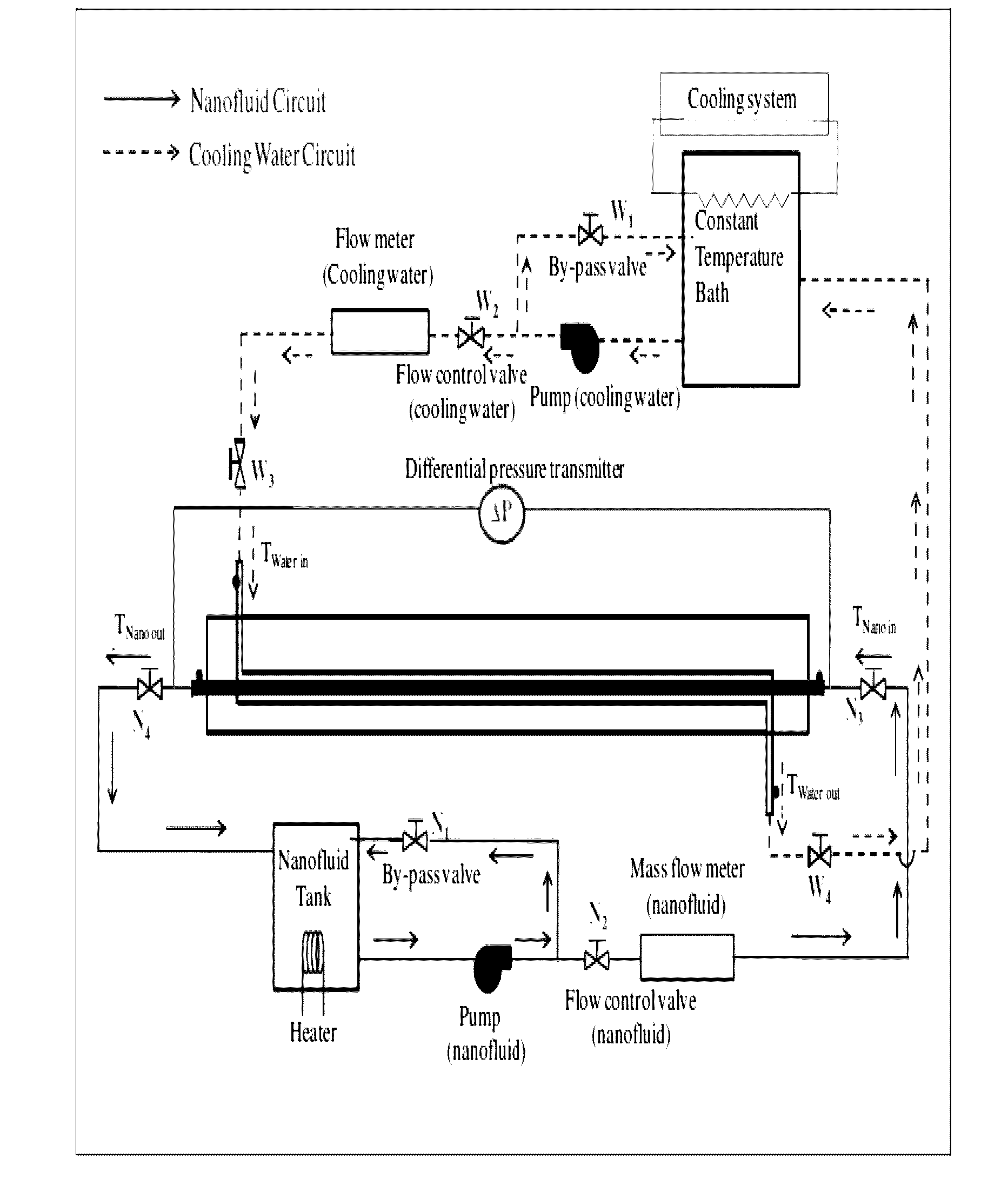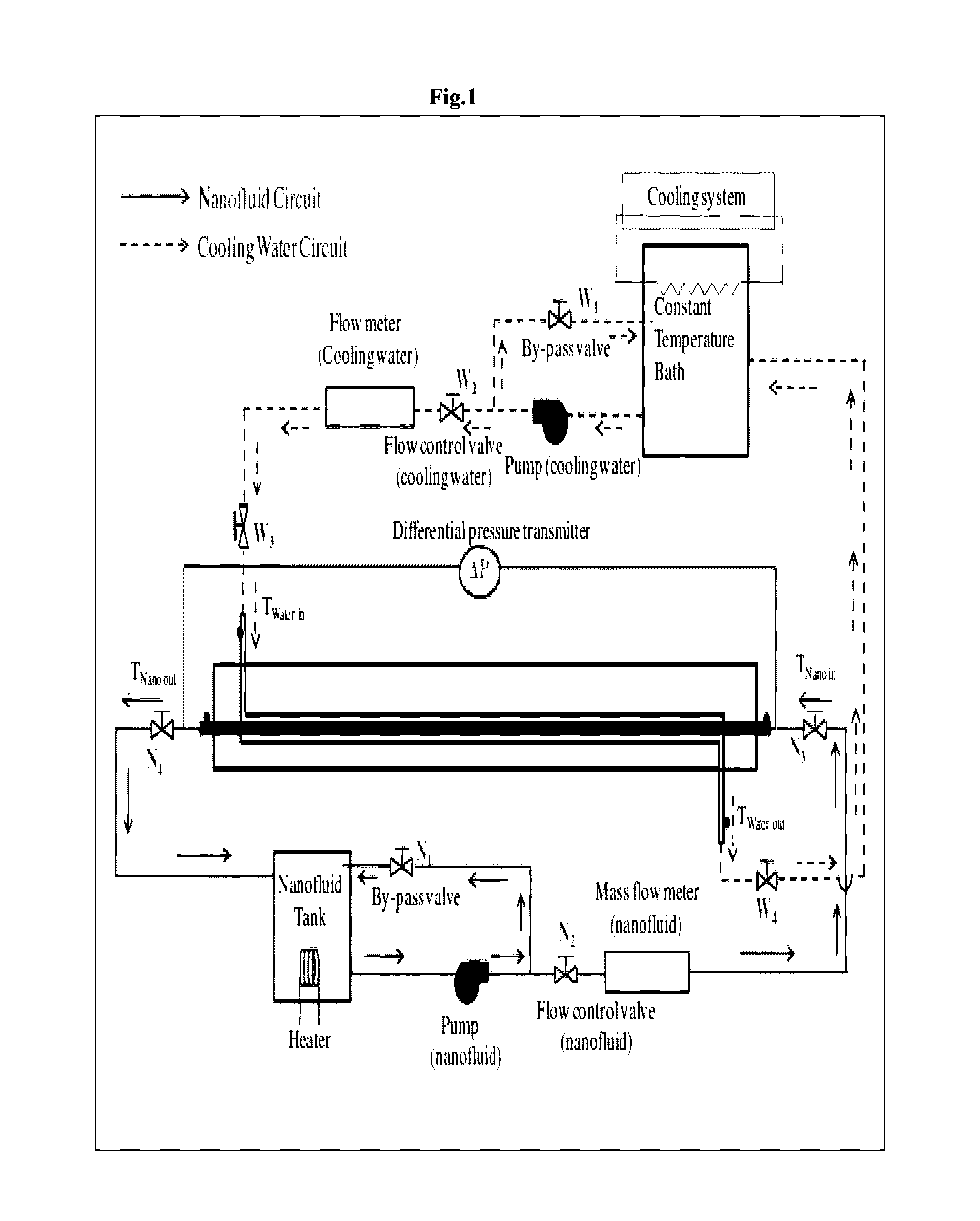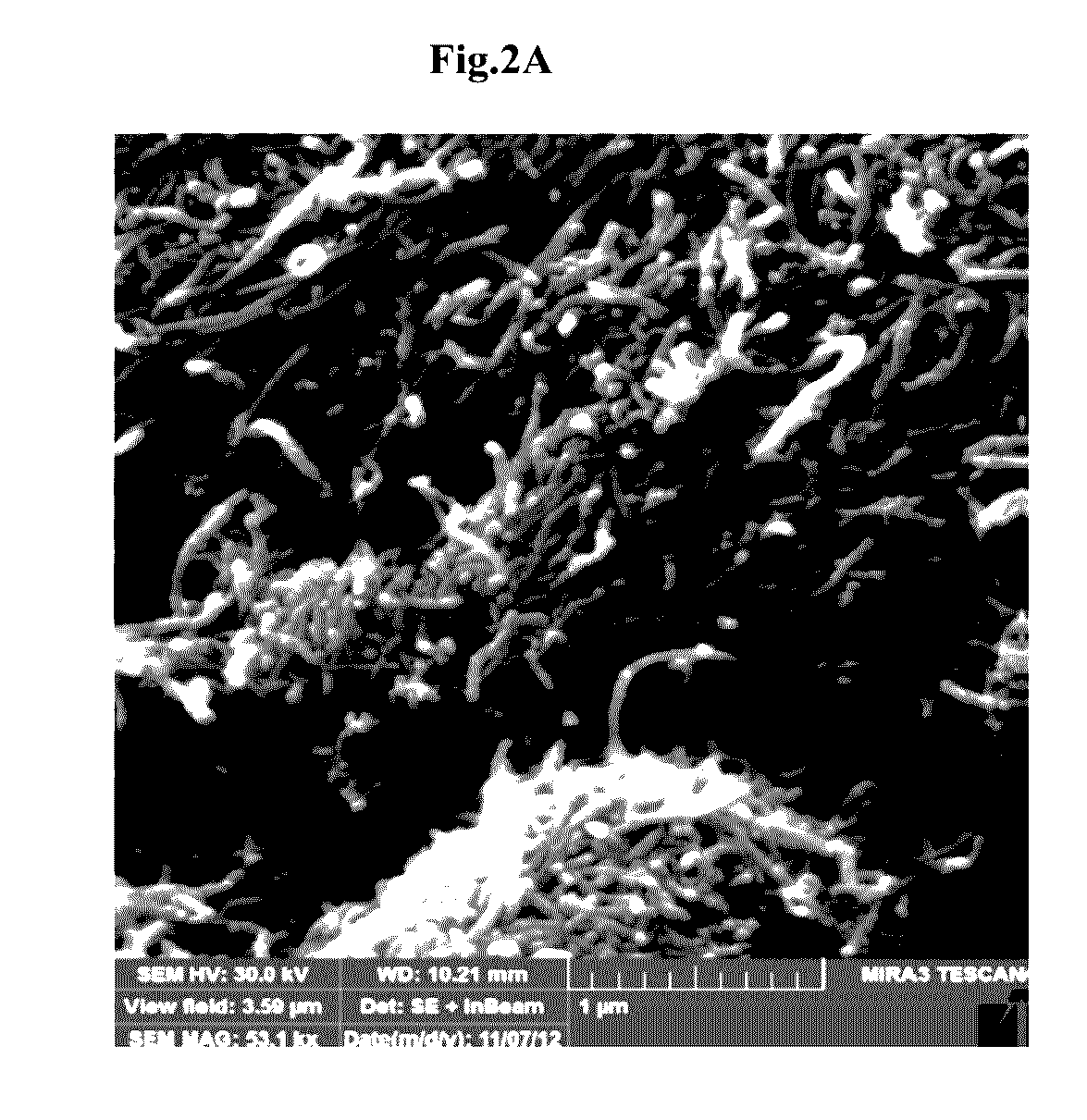Nanofluids containing carbon nanotubes and metal oxide nanoparticle composites with enhanced heat transfer and heat capacity properties
- Summary
- Abstract
- Description
- Claims
- Application Information
AI Technical Summary
Benefits of technology
Problems solved by technology
Method used
Image
Examples
example 1
Materials
[0103]Multi-walled carbon nanotubes (MWCNTs) were supplied from Chengdu Organic Chemicals Co. Ltd., China, which has the following specifications: 10 to 20 nm outer diameter, length from 10 to 30 μm with 200 m2 / g specific surface areas and a 95% purity. Ferric nitrate Fe (NO3)3.9H2O (99% purity) as precursor for iron oxide nanoparticles was supplied from Sigma and Aldrich Co.
example 2
Impregnation of CNTs with Metal Oxide Nanoparticles Using Incipient Wetness Impregnation (IWI)
[0104]The impregnation process is widely used for developing heterogeneous catalysts. It is an aqueous sol-gel process which converts a precursor solution to an inorganic solid through inorganic polymerization reactions with water. This process involves the impregnation of support material with inorganic salts having the metal deposited for preparation in a homogeneous solution in water, followed by a reduction step for conversion of this solution into a sol by treatment using water. During the impregnation method, metal ions are adsorbed to the surface of CNTs by homogeneously mixing CNTs with the metal precursors in a solution. The thermal treatment process was carried out under high temperature to crack the metal. The metal oxide nanoparticles catalyst was prepared by the sol-gel method. The precursor used for the Fe2O3-CNTs was ferric nitrate Fe(NO3)3.9H2O with 99.9% purity. The metal s...
example 3
Preparation of Nanofluids
[0105]The produced nanofluids were prepared by dispersing the raw and impregnated multiwall carbon nanotubes with metal oxide nanoparticles in water using ultrasonic sonication. The ultrasonic method was carried out for 30 minutes using the ultrasonic prop at 100% amplitude, 750 watts power density and frequency-30 kHz to prepare the nanofluids. The purpose of sonication process is to weaken the van der Wals interactions between the particles and disperse them homogenously in solution. Different samples of nanofluids were prepared at 0.01 wt. %, 0.05 wt. % and 0.1 wt. % CNT-metal oxide without using any surfactants or depressants.
PUM
 Login to View More
Login to View More Abstract
Description
Claims
Application Information
 Login to View More
Login to View More - R&D
- Intellectual Property
- Life Sciences
- Materials
- Tech Scout
- Unparalleled Data Quality
- Higher Quality Content
- 60% Fewer Hallucinations
Browse by: Latest US Patents, China's latest patents, Technical Efficacy Thesaurus, Application Domain, Technology Topic, Popular Technical Reports.
© 2025 PatSnap. All rights reserved.Legal|Privacy policy|Modern Slavery Act Transparency Statement|Sitemap|About US| Contact US: help@patsnap.com



